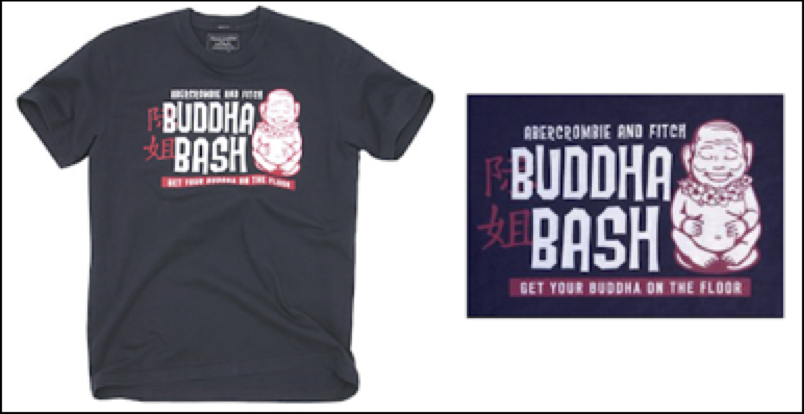Here at The Ten Thousand Things, we’re interested in the intersection of Buddhist scholarship and practice. “Ask a Scholar” is a new section of this blog in which we encourage readers to send us their questions about Buddhist history, philosophy, ethics, and more. Then we invite a qualified scholar to respond. Think of it as “Dear Abby,” but about Buddhism instead of manners. We’re pleased to have IBS’ own Dr. Natalie Quli, professor of Buddhist modernism and contemporary Theravada studies, answer our first question. Have a question you’d like answered (on Buddhism not manners)? Send it to gesshin@shin-ibs.edu.
Q: I hear the phrase “cultural appropriation” thrown around a lot these days. Is Buddhism cultural appropriation? How can that be if Buddha’s truth is universal?
Cultural appropriation involves a dominant group taking elements from a marginalized group’s culture and adopting those elements as their own or using those elements in ways that disrespect or otherwise harm the minority culture. It differs from other forms of cultural diffusion in that there is an unequal distribution of power between the two groups. The dominant group has the power to shape public understanding of the tradition being appropriated; they might borrow a tradition and distort the meaning of it, leading to misunderstanding, harmful stereotyping, or trivialization of something viewed as sacred to the original culture.
For example, at the Coachella music festival, it became trendy to wear Native American headdresses. This misrepresented the cultural tradition of Native American headdresses, which are typically worn by men who earn the feathers and wear them in a particular context with specific meanings and expressing particular values. Though concert-goers may have intended no harm, the effect was to trivialize something sacred to a marginalized community for the purpose of an “exotic” fashion statement without any regard for how the community of origin would experience this act.
So is Buddhism in the West cultural appropriation? First, it’s important to recognize that not all Buddhists in the West are converts or come from non-Buddhist backgrounds. Many Western Buddhists have Asian ancestry and come from families with centuries or even millennia of Buddhist practice; Buddhism may be deeply intertwined with their family life and cultural identities. These groups are often marginalized in Christian-majority Western countries and may have suffered persecution or ridicule for being Buddhist. For example, in the 1940s in California, Japanese Americans were painted as foreigners and forced into internment camps. In a number of cases, Japanese American Buddhist temples were vandalized.

There are also Western Buddhists who come from non-Asian, non-Buddhist backgrounds. These individuals have varying levels of familiarity with Buddhism. Perhaps they belong to a Buddhist community, have read books about Buddhism, have Buddhist friends, or have attended a meditation retreat. Or perhaps they’ve only been exposed to media representations of Buddhism in TV, movies, and other forms of popular culture but still consider themselves Buddhists. So the category of “Western Buddhist” contains both converts from various backgrounds (chiefly white) and heritage Buddhists from Asian backgrounds.
Let’s start by recognizing that Buddhism is a missionary religion that claims to hold universal truths applicable to all people (in contrast to most indigenous traditions). So unlike the headdress scenario, shouldn’t anyone—including non-Asian converts in the West—feel free to practice or represent Buddhism in any way they see fit? I think the question here is not if Westerners from non-Asian Buddhist backgrounds should practice Buddhism, but rather how they engage with Buddhism and if that engagement produces harm to marginalized and minority Buddhists. Below I consider harmful types of engagement.
Exoticizing involves exaggerating difference. Vishnu Sridharan explains in “Acknowledging Buddhism’s South Asian Roots”[1]:
I rarely got through a silent retreat without at least one person, if not multiple people, treating me as an exotic specimen. To this day, I regularly deal with such microaggressions—comments on the “beauty” and “power” of my name, for instance, or the “aura” I supposedly emanate.
Although exoticization on the surface can appear to be positive, it results in treating heritage Buddhists as though they are radically different from other Westerners. Exoticization treats Buddhism (and heritage Buddhists) as foreign—perhaps using benevolent terms, but nevertheless resulting in the characterization of Buddhism and Asian ancestry as being alien to the West. Again, it’s important to remember that many Buddhists who reside in the West have Asian ancestry and have endured being treated like foreigners despite being citizens or having come from families that have been in the US for many generations. Exoticization comes with emphasizing difference and presuming foreignness. It may look benevolent, but it is harmful.
Another form of exoticization involves fashion. Like the headdress discussed above, using symbols that are sacred to marginalized groups as objects of fashion involves trivialization of another’s religion and cultural appropriation. The central issue here is respect. Consider, for example, Ambercrombie and Fitch’s line of t-shirts, now pulled, using Buddhist imagery while depicting Chinese Americans using racist stereotypes that were designed to be funny. In addition to the “Buddha Bash” t-shirt shown below were other shirts depicting Chinese Americans doing laundry. Christine Bai writes,
One of the shirts has a picture of two Asian men at the Wongs Brothers Laundry Service and reads, “Two Wongs Can Make It White.” I don’t know if you find this to be funny but I really don’t think this image is something to be laughed at. It can greatly offend the earlier generations of Asian-Americans who came to this country having to earn a living through such hard manual labor jobs. A & F spokesperson Hampton Carney claims that they make fun of everyone, but I’m sure Abercrombie would never even dare to put out an image of blacks picking cotton or Hispanics selling oranges on the street.[2]
Central to the marketing campaign was the use of mockery and stereotyping, displaying clearly what cultural appropriation looks like in its lack of respect for the target object (a Buddha image) and its cultural context (Chinese Buddhists). And while white or non-Chinese American Buddhists may not feel offended, it’s important to remember that Buddhism can be a sort of spiritual cache for white Buddhists when they choose to share their Buddhist identity; they can also choose to conceal that identity. In contrast, Asian Americans may experience discrimination and mockery for their Buddhist/Asian identity, which may be interwoven with racial stereotyping—as displayed so vividly in the A&F t-shirt line. Their Buddhist identity may indeed be experienced not as cultural cache (via exoticization) but as a liability that makes them the target of disrespect, mockery, and even violence.[3]


Orientalism is another mode of engagement when it comes to Western Buddhism and cultural appropriation. Orientalism in terms of Buddhism involves, among other things, a patronizing attitude toward Asian and Asian American Buddhists. Orientalizing Asian and Western Buddhists of Asian descent may appear in describing them as “traditional” (perhaps without even having stepped into a non-convert Buddhist space) in contrast to one’s own “innovative” or “modern” practice. The underlying attitude may be even more derogatory, with Asian and Western Buddhists of Asian descent being characterized as “backward,” “superstitious,” or even “ignorant.” This same patronizing attitude might be crafted using terms like “cultural baggage,” or through describing Asian and Western Buddhists of Asian descent as ignorant of their own religion, such that the convert Buddhist commentator justifies their own authority to speak for real Buddhism—insinuating that they have access to original Buddhism while Asian and Western Buddhists of Asian descent practice something inauthentic or derivative.
Returning to the definition of cultural appropriation, it involves a dominant group taking elements from a marginalized group’s culture (and religion is an aspect of culture) and adopting it as their own or using elements from that culture in ways that disrespect or otherwise harm the minority culture. Hopefully the reader can see how converts, especially white converts, claiming to speak for “real” Buddhism is harmful to heritage Buddhist communities that may have already faced discrimination and violence. White, middle class convert Buddhists in the West have relatively more power in shaping public understanding of the tradition because of their higher visibility and dominant group status. Labeling heritage Buddhist groups’ practices, beliefs, and so on as inauthentic or “cultural baggage,” particularly when there has been little to no interaction with heritage Buddhists themselves as a means of correcting misunderstandings, leads to harmful stereotyping, trivialization of sacred practices, and discrimination.
For convert Western Buddhists, while perhaps
we think we’re authorities on what “real Buddhism” is and should be, the impact
of our characterizations may be similar to Ambercrombie & Fitch’s
ill-conceived line of t-shirts: belittling, derisive, stereotyping,
exoticizing, Orientalizing, or even mocking. Paying attention to how we
characterize other Buddhists’ practices, questioning if we really understand
them as well as we think we do, practicing humility and care, and having
genuine interactions with heritage Buddhists are important ways that Western
Buddhists from non-Asian backgrounds can avoid cultural appropriation.
[1] https://www.lionsroar.com/acknowledging-buddhisms-south-asian-roots/
[2] http://dailynexus.com/2002-05-03/no-one-is-laughing-at-racist-abercrombie-fitch-shirts/
A very wise, knowledgeable, and skillful response to this question. I’d like to add just one small point to this comment: “So the category of “Western Buddhist” contains both converts from various backgrounds (chiefly white) and heritage Buddhists from Asian backgrounds.”
Buddhism has now been around long enough in western countries that there is a growing number of 2nd (and some 3rd) generation children of devout white converts (and, side note, even increasing youth camps for them across the US) – thus, those of non-Asian heritage who are raised Buddhists and maybe add interesting little additional wrinkles to the questions of Buddhist culture, cultural ownership, interpretation of that culture- and what is appropriation or how long or to what degree can it be considered such as generations continue?
A beautiful, balanced, article. Thank you!
I’ve practiced since 1980 at Green Gulch Zen Center where I lived for 6 months. Each year following I found a new place to practice for 3 mo. I did this for a few decades often returning to Green Gulch. Sesshin is a special time and Oriyoki was a treat I dearly miss. You might consider asking Tempa Lama of Olma Ling (Cleavland) questions about the Bon. He was educated at the famed Menri Monastery. Arlene Lueck at S.F. Zen Center and Green Gulch is a good contact. Kokyo at Santa Cruz Zen Center has a great mind. These 3 have a good connection with the average and the highly qualified …. I like what you are doing.
P.S. Have you been to 10,000 Waves in Santa Fe?
Yes, a skillful, balanced, and very knowledgeable article. Very admirable.